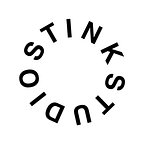The essential steps for bringing ideas to life during lockdown
Creativity and execution should never be pulled apart.
Digital transformation has been high on the agenda for most brands for years now, both in terms of their products and services, but also in how they communicate with their audience. We are living in an age of 24/7, always-on messaging. Traditional media is flatlining and ideas are finding new homes on ever evolving digital platforms. Emerging Technology, shorter attention spans, shrinking budgets — there’s a lot for clients to get their heads around. And now, as marketing teams adjust to the impact of the pandemic, there’s an urgency to move to new forms of digital communication. A new era of advertising requires new ways of working.
Creativity and execution were never meant to be pulled apart. This is advertising’s original sin; a broken process where creative ideas are born and sold in isolation of production understanding. So much time, money, and energy wasted developing ideas that will never make it out the door. At Stink Studios, our aim has always been to close the gap between an idea and its execution. Our creatives are craftspeople who understand technology. That’s why we call ourselves a studio rather than an agency. If you’re a creative working in advertising, it’s vital to develop an understanding of how the ideas you come up with will actually get made.
Here we’ve tried to share a few ideas for ways of working that help bring creativity and execution closer together:
Develop shared vocabulary
Wherever possible, work with people who do things that you can’t, and work in a variety of different configurations. Surround yourself with people who approach problems from a different point of view using different tools. Learn their vocabulary, not their craft. When you can open up the conversation to different disciplines you’ll find solutions that might otherwise have been overlooked. Whether you’re working alongside developers, designers, motion and vfx artists, or film makers, being able to talk to them with a shared vocabulary will put you at an advantage when it comes to getting things made.
Feed off constraint
Budgets and schedules shouldn’t be the sole concern of Producers. Budgets are getting smaller and less flexible, and schedules are getting shorter. Often decisions about execution can be made in the earliest stages of creative development if the person with the idea has an understanding of production. If the creative understands how it will be made then less of the idea goes to waste, saving everyone time and energy, and leaving more money on the table to make the idea happen. Spend as much time as possible with Producers, and ask lots of questions.
Make your idea as real as possible, as quickly as possible.
It’s a sad state of affairs, but unfortunately most ideas live and die in Keynote or Slides. When you’re developing ideas, do everything you can to make it as real as possible by developing prototypes and using motion design and visual effects. When we launched a recent Augmented Reality experience in Selfridges, from day one the project relied on constant back-and-forth between development, ux, visual effects, and design. The process was fluid enough to adapt the creative idea within the limits of Spark AR, learning as we went, and iterating up to the final moments before the experience launched in public. And don’t be afraid to give clients the opportunity to use a half-developed version of the idea. Invite their feedback and make them part of the process as much as possible, and be comfortable with changes happening along the way.
Understand the media placement
Traditional media was based on broadcast and awareness; getting as many eyeballs as possible on a single big idea. The new economy demands ideas that are attention-grabbing, but also uniquely relevant to the medium in which they’re being seen. Ultimately, online media is made up of a dozen technology platforms, so it’s important to keep up with the features they offer, their limitations, and the way people behave on each of them. Don’t default to cutting down a 90 second TV commercial. Instead develop overarching ideas that can be adapted to the specific features of native ad formats. This campaign for Yoox gave users searching for fashion brands on YouTube just 15 seconds (the length of the pre-roll ad) to buy the product before it was destroyed.
Prioritise details
It might run counter to the conventional wisdom of agile processes, but it’s often best to focus on the details first. Identify the one thing that you want people to remember about the experience; the thing that will be shared and talked about, and built out from that. This could be as simple as a transition, a button press, use of sound or haptics, whatever it is that elevates the experience and expresses a level of craft and care in the execution that goes beyond what the user is expecting. What’s the one thing you want people to remember about the experience? Start with that.
James Britton is group managing director at Stink Studios and a guest lecturer at Kingston School of Art.
This article was originally published Lecture In Progress, noow https://www.creativelivesinprogress.com, on November 9, 2020.
